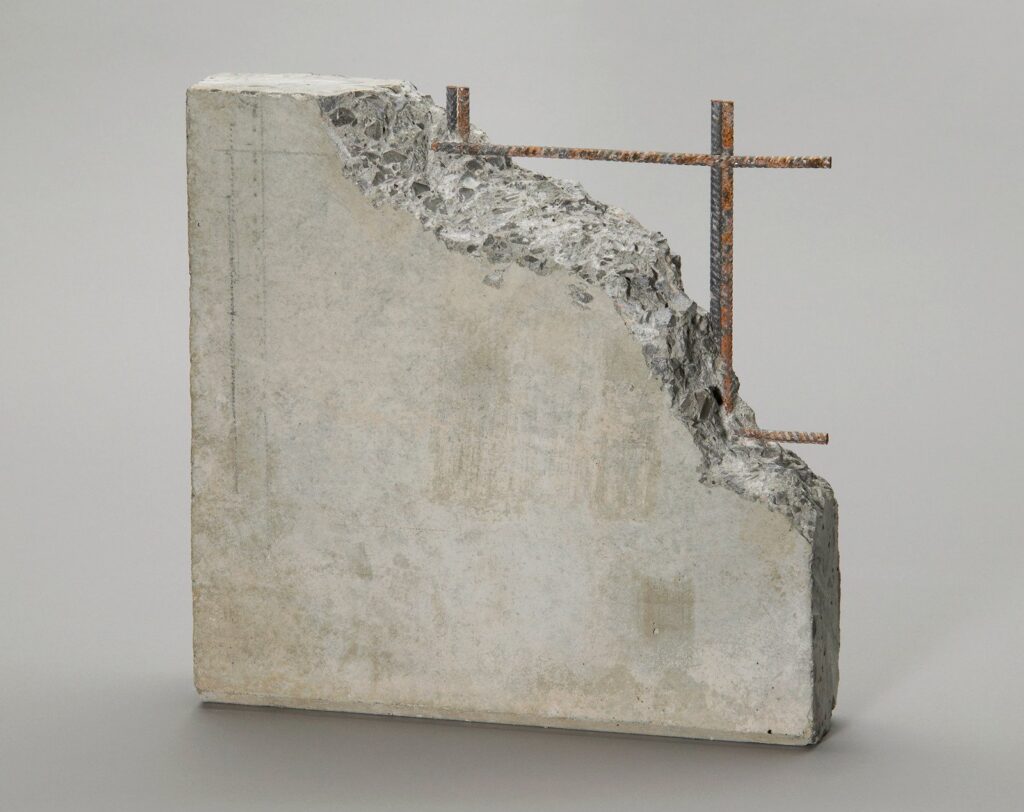When considering construction materials, reinforced concrete stands out due to its exceptional strength and durability. Its ability to withstand various environmental factors while offering design flexibility makes it a popular choice among professionals. Furthermore, its cost-effectiveness and reduced maintenance requirements can greatly impact project budgets. As you explore the advantages, you’ll find that reinforced concrete not only meets structural demands but also supports sustainability initiatives in modern construction. What implications does this have for your next project?

Key Takeaways
- Reinforced concrete provides exceptional strength and durability, improving load-bearing capacity and prolonging structural lifespan with minimal maintenance needs.
- Its cost-effectiveness reduces repair frequency, allowing for better budget management and long-term savings.
- The material’s versatility accommodates various applications and design flexibility, enabling innovative architectural styles and unique finishes.
- Reinforced concrete enhances safety with superior earthquake and fire resistance, meeting stringent building codes and protecting occupants.
- Its aesthetic appeal supports creative designs, integrating modern and traditional elements while maintaining structural integrity.
Exceptional Strength and Durability
When you consider the materials used in modern construction, reinforced concrete stands out due to its exceptional strength and durability.
Its load bearing capacity is greatly improved by the integration of steel reinforcement, allowing it to support heavy structures without compromising integrity. This combination effectively addresses the limitations of traditional concrete, which has low tensile strength.
By incorporating steel bars or mesh, you guarantee that the material can withstand tensile forces, preventing cracking and structural failure. Consequently, reinforced concrete not only prolongs the lifespan of your projects but also minimizes maintenance needs over time.
In environments exposed to harsh conditions, its resilience further solidifies its position as a preferred choice for engineers and architects focused on robust construction.
Cost-Effectiveness in Construction
Although many factors influence construction costs, reinforced concrete often proves to be a cost-effective material choice. Its durability reduces the need for frequent repairs, resulting in significant cost savings over the lifespan of a project.
When you factor in its capacity to withstand various environmental conditions, you’ll find that fewer resources are needed for maintenance. Additionally, reinforced concrete’s relatively low material cost allows for efficient budget planning, ensuring that you stay within financial parameters without sacrificing quality.
Versatility Across Different Applications
Reinforced concrete offers unmatched versatility, making it suitable for both residential construction and infrastructure development.
In residential settings, it provides durability and aesthetic flexibility, while in infrastructure, it withstands heavy loads and environmental challenges.
This adaptability guarantees that reinforced concrete meets diverse project requirements effectively.
Residential Construction Applications
While many materials can be utilized in residential construction, reinforced concrete stands out due to its versatility across various applications. You can use it for foundational elements, walls, and even roofs, providing strength and durability.
With prefabricated components, you can streamline the construction process, reducing labor costs and time. This material adapts to different architectural styles, enhancing residential aesthetics without compromising structural integrity.
You’ll find that its ability to be molded allows for innovative designs, ensuring that homes meet both functional and visual needs. Additionally, reinforced concrete’s excellent thermal mass contributes to energy efficiency, making it an ideal choice for sustainable residential projects.
Consequently, it effectively balances performance and design in residential construction.
Infrastructure Development Uses
In the domain of infrastructure development, reinforced concrete proves its versatility by accommodating a wide range of applications, from bridges and highways to tunnels and water treatment facilities.
When you consider roadway expansion, reinforced concrete offers the strength and durability necessary to withstand heavy traffic loads while providing a smooth driving surface.
In bridge construction, it combines tensile strength with resistance to environmental factors, ensuring longevity and safety.
Additionally, reinforced concrete’s adaptability allows for innovative designs, meeting specific structural requirements efficiently.
Its ability to be molded into various shapes further improves its functionality across diverse projects, making it an ideal choice for modern infrastructure needs.
Enhanced Structural Integrity
When considering structural integrity in construction, the combination of concrete and steel creates a formidable alliance that boosts the overall strength and durability of buildings.
This synergy improves load distribution, allowing structures to bear heavier weights and withstand various forces. The steel reinforcement absorbs tensile stress, while concrete handles compressive forces, ensuring a balanced approach to structural loads.
Moreover, reinforced concrete greatly aids in crack prevention. The embedded steel bars or meshes help control the formation of cracks by providing additional tensile strength, which is vital in high-stress situations.
Resistance to Environmental Factors
The strength of reinforced concrete extends beyond structural integrity to encompass significant resistance to environmental factors.
When you choose reinforced concrete, you’re investing in a material that offers exceptional weather resistance, ensuring durability against harsh conditions. Its ability to withstand extreme temperatures, moisture, and UV exposure means your structures will maintain performance over time.
Additionally, reinforced concrete provides corrosion protection for the embedded steel, reducing the risk of structural failure due to rust and degradation.
By minimizing the effects of environmental stressors, reinforced concrete improves the longevity of your projects, making it a reliable choice for various applications.
Ultimately, this resilience not only safeguards your investments but also contributes to reduced maintenance costs in the long run.
Sustainability and Eco-Friendliness
While many construction materials contribute to environmental degradation, reinforced concrete stands out for its sustainability and eco-friendliness. This material improves resource efficiency by utilizing local aggregates, reducing transportation emissions.
Its durability and longevity minimize the need for frequent replacements, further supporting green building practices. Additionally, you can incorporate recycled materials into the mix, such as fly ash or slag, which reduces waste and conserves natural resources.
Reinforced concrete’s thermal mass properties help regulate indoor temperatures, lowering energy consumption for heating and cooling. By choosing reinforced concrete, you’re not only ensuring structural integrity but also committing to environmentally responsible construction.
This strategic approach aligns with modern sustainability goals, making it a smart choice for future-focused projects.
Reduced Maintenance Requirements
Choosing reinforced concrete not only supports sustainable construction but also greatly reduces maintenance requirements. This material’s durability and resistance to environmental factors minimize the need for frequent upkeep.
By implementing effective maintenance strategies, you can extend the lifespan of your structures, reducing the frequency of repairs and replacements. Unlike traditional materials, reinforced concrete withstands harsh weather, pests, and corrosion, which translates to fewer disruptions and lower overall costs.
In addition, these long-term savings greatly improve your project’s financial viability. Investing in reinforced concrete means you’re opting for a resilient solution that requires less attention over time, allowing you to allocate resources more efficiently and focus on other critical aspects of your construction projects.
Improved Safety and Stability
When you choose reinforced concrete for your construction projects, you’re greatly enhancing structural integrity, which is essential for safety.
Its inherent properties provide excellent earthquake resistance, minimizing damage during seismic events.
Additionally, reinforced concrete’s fire resistance offers further protection, ensuring stability under extreme conditions.
Enhanced Structural Integrity
As construction techniques evolve, the incorporation of reinforced concrete greatly improves structural integrity, leading to better safety and stability.
This material boosts load distribution across structural elements, minimizing localized stress points that can lead to failure. By integrating steel reinforcement, you markedly increase the fatigue resistance of concrete, allowing it to withstand repeated loads without succumbing to cracking or deterioration.
This durability guarantees that structures maintain their performance over time, even under demanding conditions. As a result, you can expect reinforced concrete to provide a robust framework that not only meets but often exceeds safety standards.
Ultimately, choosing reinforced concrete in your projects lays a strong foundation for long-lasting, reliable structures that safeguard lives and investments.
Earthquake Resistance
Reinforced concrete greatly improves a structure’s earthquake resistance, ensuring better safety and stability during seismic events. This material’s inherent flexibility and strength allow it to dissipate energy more effectively than traditional concrete.
When you design with reinforced concrete, you’re enhancing the seismic performance of your building, meeting or exceeding local building codes. These codes often specify requirements for lateral load resistance, which reinforced concrete easily fulfills due to its composite properties.
Additionally, the integration of steel reinforcement helps prevent catastrophic failures during earthquakes, allowing structures to withstand significant ground motion. By choosing reinforced concrete, you’re not just adhering to regulations; you’re prioritizing the safety of occupants and the longevity of the building, making it an essential choice in earthquake-prone areas.
Fire Resistance
While many construction materials can compromise under high temperatures, reinforced concrete stands out for its exceptional fire resistance, offering significant safety and stability benefits.
This material’s inherent properties enable it to withstand extreme heat without structural failure, making it a preferred choice in fire safety regulations. During fire resistance testing, reinforced concrete demonstrates remarkable performance, often exceeding required standards.
Its ability to maintain integrity under duress reduces the risk of catastrophic failure, protecting both occupants and property. Additionally, using reinforced concrete can lower insurance premiums, as insurers recognize its fire-resistant qualities.
Design Flexibility and Aesthetic Appeal
When considering construction materials, the design flexibility and aesthetic appeal of reinforced concrete stand out considerably.
Its versatility allows you to create structures that meet both functional and visual demands. You can easily incorporate various color options, enabling you to match or contrast with surrounding environments.
Additionally, texture variations provide unique finishes, from smooth surfaces to patterned designs, enhancing the overall aesthetic. This adaptability not only accommodates innovative architectural styles but also guarantees compliance with local building codes and regulations.
Whether you’re aiming for a modern look or a traditional feel, reinforced concrete can be customized to suit your vision, making it an ideal choice for diverse construction projects.
Frequently Asked Questions
How Does Reinforced Concrete Compare to Traditional Concrete?
When you assess the performance comparison, reinforced concrete offers significant structural advantages over traditional concrete. It withstands tension and compression better, resulting in improved durability and longevity, making it a superior choice for demanding construction applications.
What Are the Common Additives Used in Reinforced Concrete?
You’ll often encounter additive types like fly ash, slag, and superplasticizers in reinforced concrete. These additives contribute to performance improvement, improving workability, strength, and durability, ensuring your projects meet stringent engineering requirements effectively.
Can Reinforced Concrete Be Recycled After Demolition?
Yes, you can recycle reinforced concrete after demolition. Various recycling techniques, such as crushing and screening, are employed during demolition processes, allowing you to reuse materials effectively while minimizing waste and environmental impact.
What Is the Lifespan of Reinforced Concrete Structures?
The lifespan of reinforced concrete structures generally ranges from 50 to 100 years, depending on various lifespan factors like environmental conditions and maintenance. You can expect high durability, but regular assessments guarantee peak performance throughout its life.
How Does Weather Affect the Curing Process of Reinforced Concrete?
Weather considerably impacts the curing process of reinforced concrete. High curing temperatures and low humidity levels can lead to rapid evaporation, while low temperatures can slow hydration, affecting the strength and durability of the final structure.
Conclusion
Incorporating reinforced concrete in your construction projects not only guarantees exceptional strength and durability but also improves overall safety and stability. Its cost-effectiveness and resistance to environmental factors greatly reduce maintenance needs, making it a practical choice. The material’s versatility allows you to explore creative design possibilities while supporting sustainability efforts through the use of recycled materials. Ultimately, choosing reinforced concrete means investing in a long-lasting, structurally sound solution that meets modern architectural demands.
